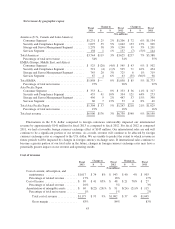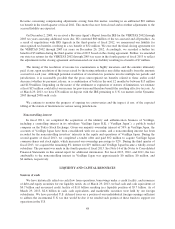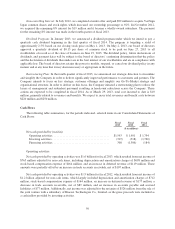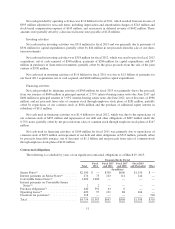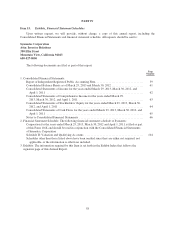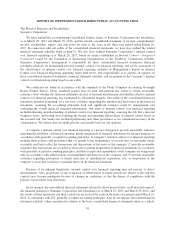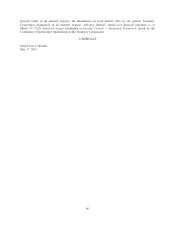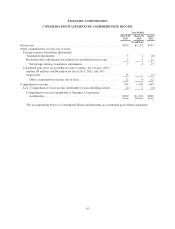Symantec 2013 Annual Report Download - page 151
Download and view the complete annual report
Please find page 151 of the 2013 Symantec annual report below. You can navigate through the pages in the report by either clicking on the pages listed below, or by using the keyword search tool below to find specific information within the annual report.certain financial and derivative instruments to enable users of our financial statements to better understand the
effect of those arrangements on our financial position. In January 2013, the FASB issued another update to
clarify the scope of the related instruments, in which the standard applies to bifurcated embedded derivatives,
repurchase and reverse repurchase agreements, and securities borrowing and lending transactions. The new
guidance will be applicable to us on a retrospective basis in the first quarter of fiscal 2014. We do not expect that
this guidance will materially impact our disclosures included in our Consolidated Financial Statements.
In January 2013, the FASB issued an accounting standards update that will require us to release cumulative
translation adjustment (“CTA”) into earnings when an entity ceases to have a controlling financial interest in a
subsidiary or group of assets within a consolidated foreign entity and the sale or transfer results in the complete
or substantially complete liquidation of the foreign entity. For sales of an equity method investment in a foreign
entity, a pro rata portion of CTA attributable to the equity method investment would be recognized in earnings
upon sale of the investment. When a parent entity sells either a part or all of its investment in a consolidated
foreign entity, CTA would be recognized in earnings only if the parent no longer has a controlling financial
interest in the foreign entity as a result of the sale. In addition, CTA would be recognized in earnings upon a
business combination achieved in stages. The update will be effective, on a prospective basis for events
beginning in our 2015 fiscal year and applies to all interim periods. We do not expect that this guidance will
materially impact our Consolidated Financial Statements.
In February 2013, the FASB issued an accounting standards update that requires entities to present
reclassifications by component when reporting changes in Accumulated other comprehensive income (“AOCI”)
balances. For significant items reclassified out of AOCI to net income in their entirety, entities are required to
report the effect on the line items in the Income Statement, either on the face of the Income Statement or in the
notes. For significant items not reclassified to net income in their entirety, entities must cross-reference in the
notes to the other disclosures that already provide information about those amounts. This new guidance will be
adopted in the first quarter of fiscal 2014 on a prospective basis. We do not expect that this guidance will
materially impact our Consolidated Financial Statements.
Item 7A. Quantitative and Qualitative Disclosures about Market Risk
We are exposed to various market risks related to fluctuations in interest rates, foreign currency exchange
rates, and equity prices. We may use derivative financial instruments to mitigate certain risks in accordance with
our investment and foreign exchange policies. We do not use derivatives or other financial instruments for
trading or speculative purposes.
Interest rate risk
As of March 29, 2013, we had $2.10 billion in principal amount of fixed-rate senior notes outstanding, with
a carrying amount of $2.10 billion and a fair value of $2.19 billion, which fair value is based on Level 2 inputs of
market prices for similar debt instruments and resulting yields. We have performed sensitivity analyses as of
March 29, 2013 by using a modeling technique that measures the change in the fair values arising from a
hypothetical 50 bps movement in the levels of interest rates across the entire yield curve, with all other variables
held constant. On March 29, 2013, a hypothetical 50 bps increase or decrease in market interest rates would
change the fair value of the fixed-rate senior notes by a decrease of approximately $57 million and an increase of
approximately $59 million, respectively. However, this hypothetical change in interest rates would not impact the
interest expense on the fixed-rate debt.
53


